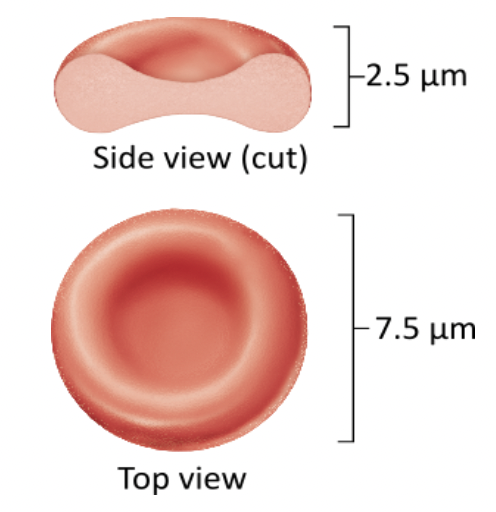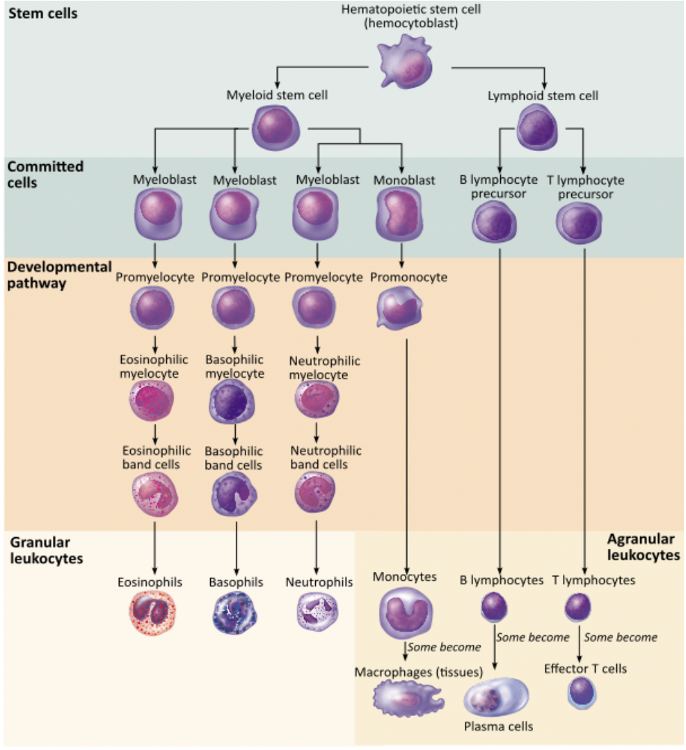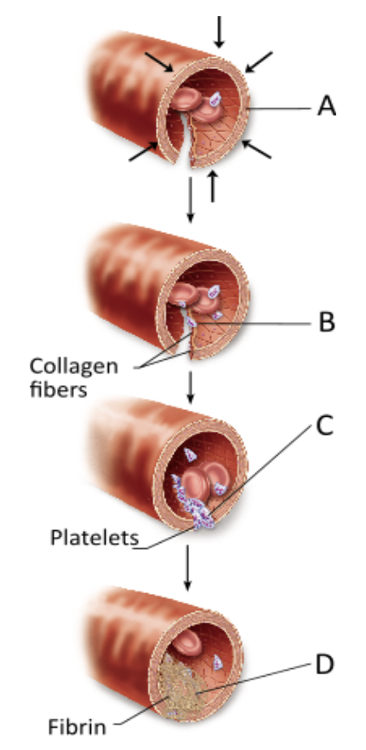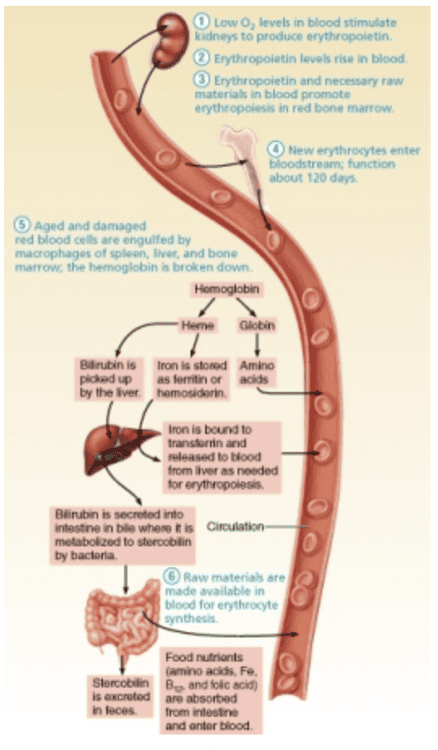
What is the name of the protein found in erythrocytes that transports respiratory gases and provides the red color?
hemoglobin
Explanation: Other than water, hemoglobin makes up almost the entire contents of an erythrocyte. It can bind both oxygen and carbon dioxide.

From which cell do the granulocytes descend?
myeloblast
Explanation: All three types of granular leukocytes descend from myelocytes.

What is a young, anucleate erythrocyte called?
reticulocyte
Explanation: Reticulocytes are a stage in erythrocyte development when the nucleus has just been lost. These are found in circulating blood, but they are typically only a small percent of total red cells.
People with Type AB blood are considered "universal recipients" because they lack agglutinogens on their RBCs.
False
Explanation: People with Type AB blood are considered "universal recipients" because they lack antibodies to both A and B antigens (agglutinogens). They don't have the antibodies that would cause a transfusion reaction with Type A, B or AB blood. Since type O blood is devoid of A or B antigens, anyone can receive it without concern of a transfusion reaction. People with type O blood are considered "universal donors" because they lack A and B agglutinogens on their RBCs.

Which of the following is FALSE regarding the role of platelets in hemostatic reactions?
Platelets release the only chemical factors that can initiate coagulation.
Explanation: Platelet chemicals initiate the intrinsic pathway, but tissue factors released from damaged endothelium start the extrinsic pathway for coagulation in motion.
What factor stimulates platelet formation?
thrombopoietin
Explanation: Platelet formation (thrombopoiesis) is stimulated by thrombopoietin.

Erythropoietin (EPO) stimulates the developmental process shown here. What part of the body does erythropoietin (EPO) target to increase erythropoiesis?
bone marrow
Explanation: The bone marrow, specifically red marrow, is the site of blood cell production and is stimulated by erythropoietin.
Which of the following might trigger erythropoiesis?
hypoxia of EPO-producing cells
A person with type B blood could receive blood from a person with either type B or type O blood.
True

What enzyme removes unneeded clots after healing has occurred?
plasmin
Explanation: As healing progresses, the clot retraction process reduces the size of the clot, while plasminogen is activated into plasmin that digests the fibrin in the clot.
A person who lacks agglutinogen A but has agglutinogen B would have blood type __________.
B
Explanation: Agglutinogens are glycoproteins found on the surface of erythrocytes. Someone with type B blood has agglutinogen B (but not A) on the surface of their erythrocytes.
What organ in the body regulates erythrocyte production?
kidney

What erythrocyte production disorder results from an autoimmune disease associated with vitamin B12 absorption?
pernicious anemia
Explanation: A glycoprotein called intrinsic factor, produced by the stomach, is required to absorb adequate vitamin B12. Pernicious anemia results when the stomach does not produce adequate intrinsic factor, often because the cells that produce it are attacked by the body’s immune system.
Which of the following scenarios could result in HDN (hemolytic disease of the newborn)?
B-negative female pregnant with an AB-positive baby
Explanation: Hemolytic disease of the newborn (HDN) can develop when an Rh-negative mother carries an Rh-positive fetus. Unlike anti-A and anti-B antibodies, anti-Rh antibodies are not preformed (i.e., a person doesn't produce them until they've been exposed to Rh-antigens for the first time). This initial exposure can occur when the Rh-negative mother carries her first Rh-positive baby. The first such pregnancy usually results in the delivery of a healthy baby. But during this pregnancy and particularly during delivery, the mother may be sensitized by her baby's Rh-positive antigens that pass into her bloodstream. If so, she will form anti-Rh antibodies unless treated with RhoGAM during pregnancy and around the time of delivery. RhoGAM is a serum containing anti-Rh antibodies. By agglutinating the Rh factor, it blocks the mother's immune response and prevents her sensitization. If the mother is not treated and becomes pregnant again with another Rh-positive baby, her antibodies will cross through the placenta and destroy the baby's RBCs, producing the condition known as hemolytic disease of the newborn (HDN).